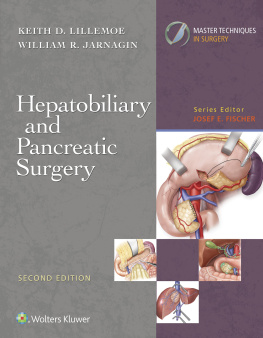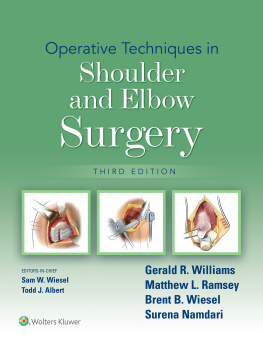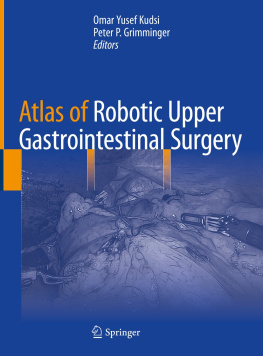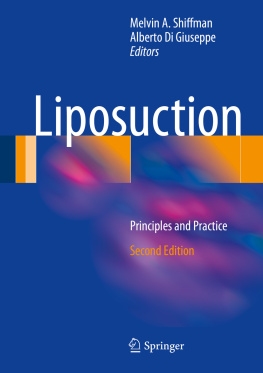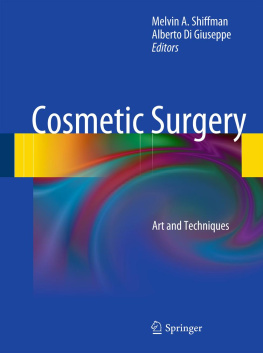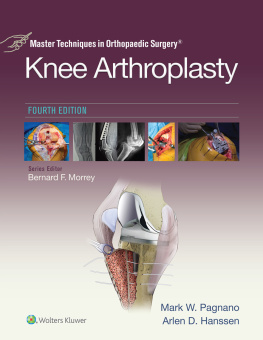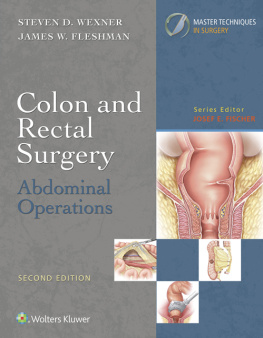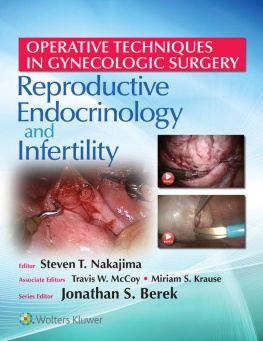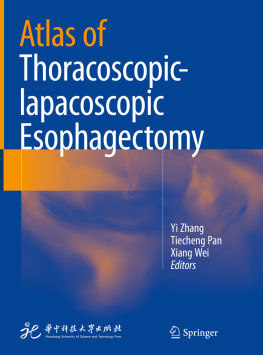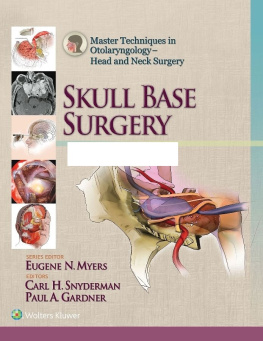Table of Contents
Master Techniques in Surgery : Hepatobiliary and Pancreatic Surgery
Edited by:
Keith D. Lillemoe, MD
W.G. Austen Professor
Harvard Medical School
Chief of Surgery
Massachusetts General Hospital
Boston, Massachusetts
William R. Jarnagin, MD
Chief, Hepatopancreatobiliary Service
Leslie H. Blumgart Chair
Department of Surgery
Memorial Sloan-Kettering Cancer Center
Professor of Surgery
Weill Medical College of Cornell University
New York, New York
Series Editor
Josef E. Fischer, MD
Distinguished William V. McDermott
Professor of Surgery
Harvard Medical School
Chair, Department of Surgery, Emeritus
Beth Israel Deaconess Medical Center
Chair, Department of Surgery, Emeritus
University of Cincinnati College of Medicine
Boston, Massachusetts
Illustrations by: Anne Rains, Arains Illustration, Inc.
Body Scientific International, LLC.
Copyright
Acquisitions Editor: Keith Donnellan
Product Development Editor: Sean McGuire
Editorial Assistant: Jeremiah Kiely
Marketing Manager: Julie Sikora
Production Project Manager: Linda Van Pelt/Marian Bellus
Design Coordinator: Terry Mallon
Artist/Illustrator: Jen Clements
Manufacturing Coordinator: Beth Welsh
Prepress Vendor: TNQ Technologies
Copyright 2020 Wolters Kluwer.
Copyright 2013 Wolters Kluwer Health/Lippincott Williams & Wilkins. All rights reserved. This book is protected by copyright. No part of this book may be reproduced or transmitted in any form or by any means, including as photocopies or scanned-in or other electronic copies, or utilized by any information storage and retrieval system without written permission from the copyright owner, except for brief quotations embodied in critical articles and reviews. Materials appearing in this book prepared by individuals as part of their official duties as U.S. government employees are not covered by the above-mentioned copyright. To request permission, please contact Wolters Kluwer at Two Commerce Square, 2001 Market Street, Philadelphia, PA 19103, via email at (products and services).
987654321
Printed in China
Library of Congress Cataloging-in-Publication Data
Names: Lillemoe, Keith D., editor. | Jarnagin, William R. (Surgeon), editor.
Title: Hepatobiliary and pancreatic surgery / edited by Keith D. Lillemoe, William R. Jarnagin.
Other titles: Hepatobiliary and pancreatic surgery (Lillemoe) | Master techniques in surgery.
Description: Second edition. | Philadelphia : Wolters Kluwer, [2020] | Series: Master techniques in surgery | Includes bibliographical references and index.
Identifiers: LCCN 2019015650 | ISBN 9781496385574
Subjects: | MESH: Liver Diseasessurgery | Pancreatic Diseasessurgery | Biliary Tract Diseasessurgery | Digestive System Surgical Proceduresmethods
Classification: LCC RD546 | NLM WI 770 | DDC 617.5/57dc23LC record available at https://lccn.loc.gov/2019015650
This work is provided as is, and the publisher disclaims any and all warranties, express or implied, including any warranties as to accuracy, comprehensiveness, or currency of the content of this work.
This work is no substitute for individual patient assessment based upon healthcare professionals examination of each patient and consideration of, among other things, age, weight, gender, current or prior medical conditions, medication history, laboratory data and other factors unique to the patient. The publisher does not provide medical advice or guidance and this work is merely a reference tool. Healthcare professionals, and not the publisher, are solely responsible for the use of this work including all medical judgments and for any resulting diagnosis and treatments.
Given continuous, rapid advances in medical science and health information, independent professional verification of medical diagnoses, indications, appropriate pharmaceutical selections and dosages, and treatment options should be made and healthcare professionals should consult a variety of sources. When prescribing medication, healthcare professionals are advised to consult the product information sheet (the manufacturers package insert) accompanying each drug to verify, among other things, conditions of use, warnings and side effects and identify any changes in dosage schedule or contraindications, particularly if the medication to be administered is new, infrequently used or has a narrow therapeutic range. To the maximum extent permitted under applicable law, no responsibility is assumed by the publisher for any injury and/or damage to persons or property, as a matter of products liability, negligence law or otherwise, or from any reference to or use by any person of this work.
shop.lww.com
Dedication
To my wife, Cheryl, and my family for your many years of support; and to the surgical trainees who drive each of us to be at our best each and every day.
K.L.
To my family, my colleagues, and mentors, but most of all to my trainees and patients, who motivate us to always to strive for excellence.
W.J.
Preface
Forty years ago, many of the operations described in this volume were performed rarely, if at all, and almost never outside of a few highly specialized referral centers. Over that relatively short span of time, hepatobiliary/pancreatic (HPB) surgery has progressed from a high-risk proposition, practiced by a small band of pioneering surgeons, to relatively common practice, with the expectation of good outcomes for the vast majority of patients. Indeed, HPB surgical procedures are now widely performed, from academic tertiary referral centers to community hospitals, and the indications for many procedures continue to expand.
Many factors have played a role in the transformation of this field, not the least of which has been improvements in operative and perioperative care generally. Another major factor has been the evolution of HPB surgery into a recognized area of specialization. The early practitioners, many of them legendary figures in surgery, laid a solid foundation and passed on the knowledge of many hard lessons learned over the years. The next generation expanded this knowledge base and refined the surgical techniques and management approaches that propelled HPB surgery into the mainstream. With the framework established, it then became possible to shift the focus to improving outcomes in patients with HPB-related diseases, rather than merely surviving the perioperative period. It is our charge now to continue to advance the field, not only by further improving the safety of the operations, but to better align the indications with an increasing understanding of the disease processes in order to improve patient selection.
We are the beneficiaries of these several decades of hard work on the part of many surgeons, to whom we owe a large debt of gratitude. Although their efforts set the stage to allow the routine performance of major HPB surgical procedures, the margin of error remains very narrow. These operations can be very challenging from a technical standpoint, and even minor miscalculations can have profound adverse consequences.
This atlas is meant to provide detailed description of the technical aspects of liver, biliary, and pancreatic operations, many commonly performed but others less so. We are indebted to our coauthors, all experts in the field, who have shared their insights into these procedures based on their extensive experience. Although the focus is on the technical conduct of operative procedures, efforts are made to include discussion of indications/contraindications, preoperative assessment, and perioperative management. Our aim was to provide a volume valued equally by trainees and established HPB surgeons.

